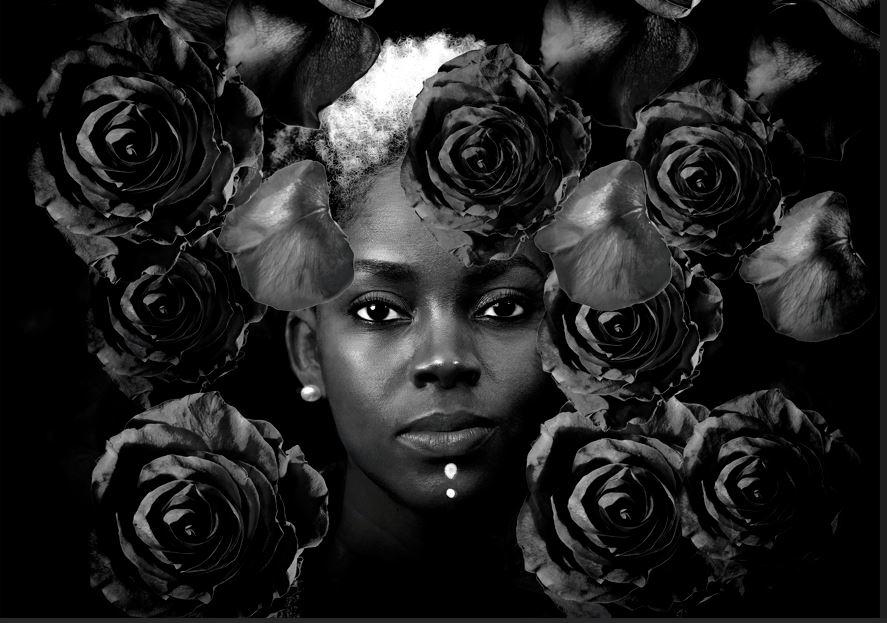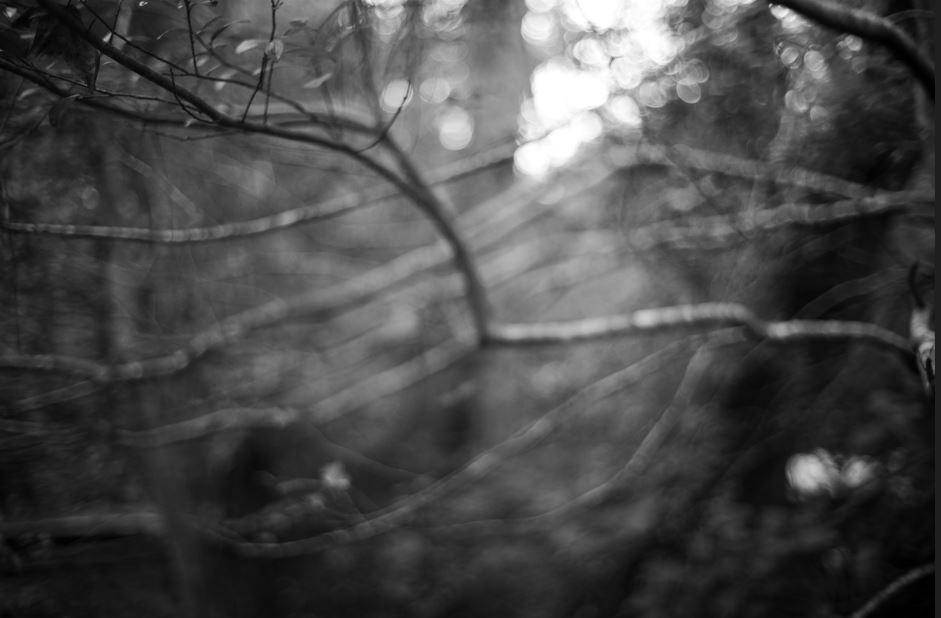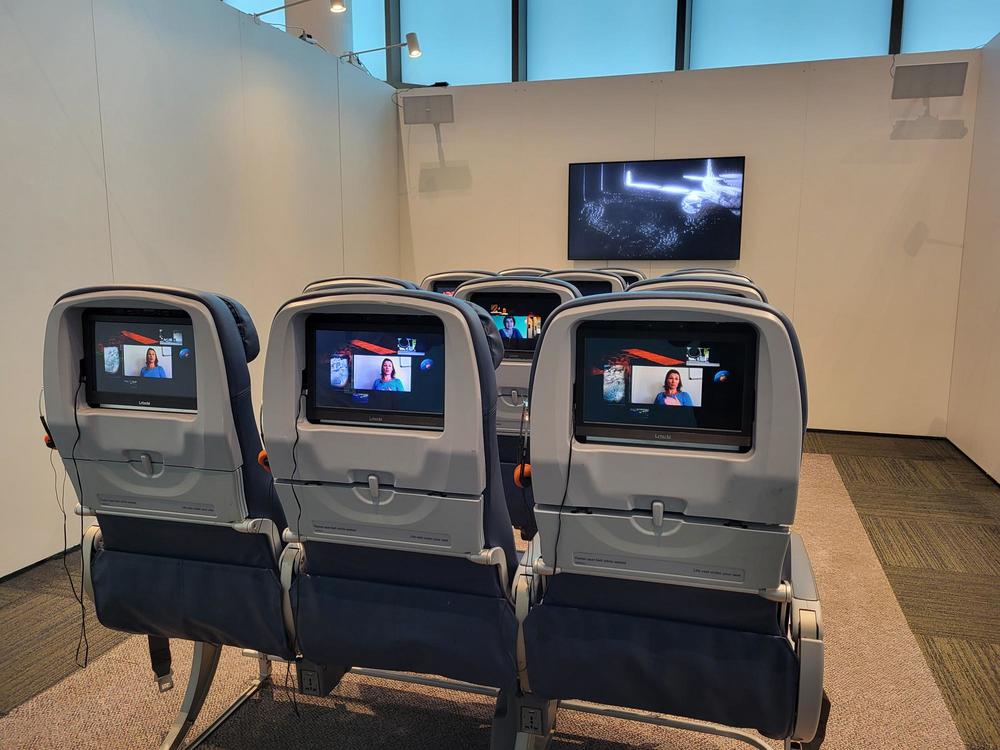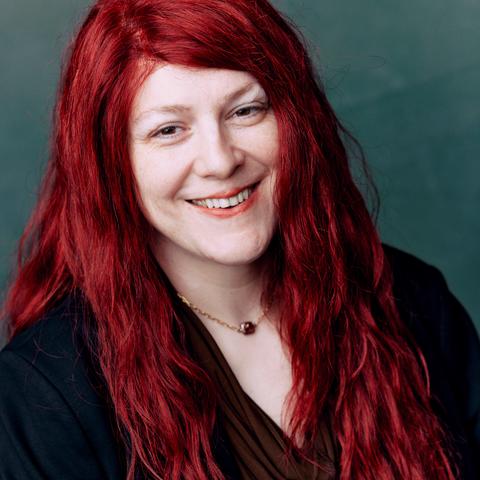
Section Branding
Header Content
New exhibit at the CDC Museum provides artists’ perspectives on life during COVID-19
Primary Content
LISTEN: A new exhibit at the Centers for Disease Control and Prevention features a dozen commercial airline seats, complete with locked tray tables and a lack of leg room. It’s one way to experience "Stand & Witness: Art in the Time of COVID-19" at the Centers for Disease Control and Prevention’s David J. Sencer Museum. GPB’s Ellen Eldridge has more.

The land itself changed under the weight of COVID-19. The globe together experienced a deadly pandemic, and most of us are still trying to wrap our minds around what happened, what we lost, and who we lost.
Photographic artist Sheila Pree Bright's work considers the land, globally, and fighting over the land about things like climate change.
She started reading W.E.B. Dubois, and, in particular, an essay called "Behold the Land."
"And I was thinking about living in the unknown. And where do we go next?'" she said.
The answers she found became the body of work included in the Stand & Witness: Art in the Time of COVID-19 display at the Centers for Disease Control and Prevention’s David J. Sencer Museum.
The works by an international group of artists, poets, authors and performers provide insight into processing life during a pandemic.
"We were not able to go out of the house and I was trying to get a deeper connection to the land," Pree Bright said.
Her landscapes, at times, blur like trying to see through a dirty window without eye glasses.
"It's like playing the fine line between reality and nonreality," Pree Bright said.

But it wasn't just COVID-19 taking lives and breaking hearts in 2020.
"I was thinking a lot of stuff because, you know, George Floyd happened," Pree Bright said. "I was thinking about that, about Black Lives Matter and how that kind of changed the world globally because we were in COVID."
She said the anxious feeling of living in the unknown was nearly overwhelming.
"It's about breathing," she said. "To breathe, you know, and we had to wear masks."
Still, Pree Bright feels connected to the land now because she has continued creating landscapes. The art benefits her in other ways as well.
"That's my way of reducing stress and improving mental wellness, you know, because in the world, humans, we are going through a lot right now," she said.
That includes the upcoming presidential election.
Pree Bright wants to convey a deeper connection to the land and people through meditation.
"Being connected to the land, I do believe that you can reduce your stress and improve your mental health," she said. "And I think our world is in a shift right now."
In many ways, artists are first responders, the museum says in the exhibit description, noting that shortly after people started isolating in March 2020, artists took to their studios, desks and Zoom to bear witness to and process the COVID-19 pandemic. Throughout the pandemic, they continued to serve on the frontlines of COVID-19 interpretation.

Walking into the installation by artists Jeremy Bolen and Jamie Allen is like walking down the aisle of an airplane — literally, as the exhibit is constructed from actual seats from an airliner. Choose a window, middle of aisle seat from one of the four rows.
The practical metaphor allows visitors to watch a screening of The Impossibility of a Planet, a video installation that includes interviews with global scientists, including from CDC, discussing the planetary-scale challenges made apparent by the COVID-19 pandemic.
The title is a reference to the adage that "no man is an island."
"We're all connected to each other and have various attachments and responsibilities — of the kind that Sheila [Pree Bright] was pointing to, right?" Allen said.
We all need food, air and healthy environments that connects us both to those systems, but also also to one another, he said.
"There's a deeply human side to what motivates us creatively," Allen said, "meaning that, like, not contacting people actually sort of makes you very isolated, I think, mentally and creatively ... because collaboration is such a deep part of your practice."
The lack of in-person inspiration deeply affected his art during the COVID lockdown, Allen said, as did many of the people he and Bolen interviewed for the project.
"(They) talked continuously about like the water cooler, the pub after the meeting, the coffee chat, you know, as being kind of central to the way that motivation and knowledge and creativity actually function," he said.
Curator Louise Shaw said her idea was for artists to share their unique perspectives about what happened during the early COVID-19 period.
"This is not an art exhibit about people who had COVID in their personal, you know, their medical journeys," she said. "It's really about how they spent their time during the pandemic, thinking about, processing this global experience."
Stand & Witness: Art in the Time of COVID-19 is on display through Oct. 25.

